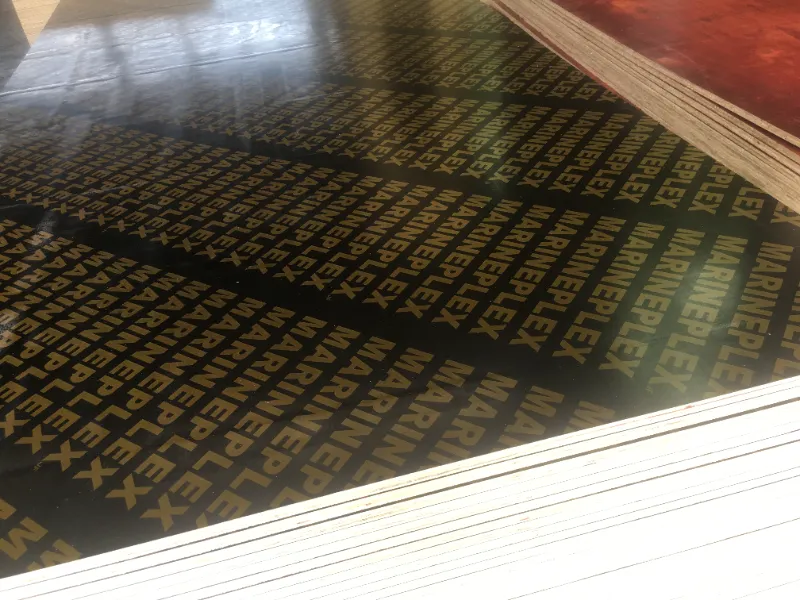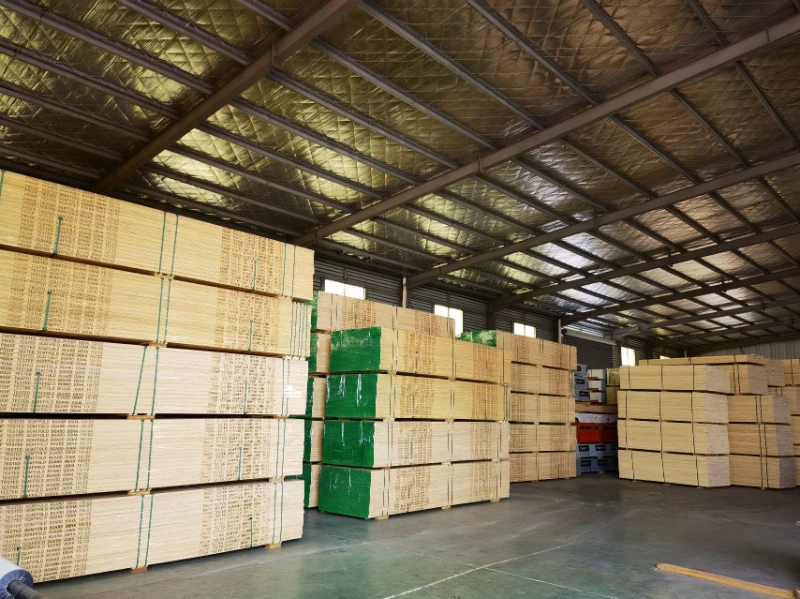Stop Plywood Deformation: Expert Guide to Prevent Warping in Jumbo Size Plywood
Are you frustrated with plywood that warps and deforms, especially when working with large sheets? Deformation in plywood can ruin projects, waste materials, and cost you time and money. This comprehensive guide, brought to you by Jsylvl, a leading manufacturer of high-quality plywood and engineered wood products, will walk you through the common causes of plywood deformation and provide practical, expert-backed solutions to prevent warping, particularly in jumbo size plywood. Read on to learn how to maintain the integrity of your plywood and ensure your projects stay flawless.
1. What is Plywood and Why is Deformation a Common Issue?
Plywood, a staple in construction and furniture making, is a versatile engineered wood product crafted from thin layers of wood veneer. These layers of wood, known as plies or veneer, are glued with adhesives and pressed together, with the grain direction of each layer running perpendicular to the adjacent layers. This cross-grain construction is what gives plywood its exceptional strength and structural integrity compared to solid wood. Plywood is often used in a wide range of applications, from structural panels in buildings to furniture components and decorative panels.
However, despite its advantages, plywood is susceptible to deformation, primarily warping. Why is plywood deformed or warp a common issue? The very nature of wood makes it hygroscopic, meaning it readily absorbs and releases moisture from the environment. This moisture absorption and release cause the wood fibers to swell and shrink. Because plywood is made of multiple layers of wood veneer glued together, uneven moisture changes across these layers can create internal stresses. This stress, combined with factors like structural asymmetry and improper handling, can lead to plywood deformation, especially in larger sheets like jumbo size plywood. Understanding these underlying causes is crucial to implement effective preventive measures.
2. Understanding the Main Culprits: What Causes Plywood Deformation?
Several factors can contribute to plywood deformation, and it’s often a combination of these culprits working together that results in warped or bent sheets. Let's break down the most common reasons why plywood might deform:
- Moisture Imbalance: As mentioned earlier, wood is sensitive to moisture. Significant variations in humidity levels can cause uneven expansion and contraction across the plywood sheet. If one surface absorbs more moisture than the other, it will expand more, leading to bending or warping.
- Structural Asymmetry: Ideally, plywood construction should be balanced, meaning the layers are symmetrically arranged around a central core. However, if the number of layers or the thickness of veneer is unevenly distributed, or if different tree species with varying densities are used in a structurally asymmetrical manner, it can create internal stresses that become more pronounced with moisture changes. This structural asymmetry is more likely to cause deformation.
- Improper Drying of Veneer: The production of plywood involves drying the wood veneer before pressing. If the veneer is not properly dried to a consistent moisture content before being glued and pressed, it will be more prone to warp later. Unevenly dried veneer will have areas with different moisture levels, causing uneven expansion and contraction after production.
- Uneven Pressure During Pressing: In the hot pressing process, if the pressure applied is not evenly distributed across the entire plywood panel, it can lead to uneven density and stress distribution within the board. This uneven pressure during production methods can make the plywood more susceptible to deformation over time.
- Poor Storage and Handling: Incorrect storage practices are a major contributor to plywood deformation. Storing plywood flat on an uneven surface, or in an environment with fluctuating humidity, can induce warp. Similarly, improper handling during transportation can also cause physical stress and contribute to bending.

3. Moisture's Role: How Does Moisture Content Affect Plywood and Lead to Warping?
Moisture content is arguably the most significant factor influencing plywood deformation. Wood is a hygroscopic material, meaning it naturally exchanges moisture with its surrounding environment to reach equilibrium. This equilibrium moisture content (EMC) varies depending on the ambient temperature and relative humidity.
When plywood absorbs moisture, the wood fibers swell, and when it loses moisture, they shrink. In plywood, because the grain direction of each veneer layer is perpendicular, this swelling and shrinking occur differently in each layer. If the entire sheet absorbs or loses moisture evenly, the effects are minimized. However, if one surface or edge of the plywood is exposed to different humidity levels than the other, it will absorb or release moisture at a different rate.
For instance, if the top surface of a plywood sheet is exposed to higher humidity while the bottom surface is against a drier floor, the top surface will absorb more moisture and expand more than the bottom. This uneven expansion creates internal stress, causing the plywood to bend or warp upwards, resulting in deformation caused by moisture. Conversely, if the top surface is drier, it might warp downwards.
Maintaining a consistent moisture content throughout the plywood sheet is key to preventing warp. This starts with using properly dried veneer in the production of plywood and continues through storage, transportation, and installation.
4. The Impact of Structural Asymmetry: Why Uneven Layers Cause Bending?
The structural design of plywood is crucial for its stability. Ideally, plywood should be structurally symmetrical, meaning the layers of veneer are arranged in a balanced way around the central core. This symmetry ensures that stresses are evenly distributed throughout the sheet.
However, structural asymmetry can arise in several ways during the production of plywood:
- Unequal Number of Layers: If the plywood has an odd number of layers, it inherently lacks perfect symmetry. While this isn't always a problem, it can increase the potential for deformation if other factors, like moisture imbalance, are present.
- Varying Veneer Thickness: If the thickness of veneer layers is not consistent throughout the plywood sheet, it creates asymmetry. Thicker layers on one side compared to the other can lead to uneven stress distribution.
- Different Wood Species: Using different tree species with significantly different densities or expansion/contraction rates in the same plywood sheet can also create structural asymmetry. For example, combining a dense hardwood veneer with a softer softwood veneer in an asymmetrical arrangement can lead to warping.
Structural asymmetry amplifies the effects of moisture changes. In an asymmetrical plywood sheet, when moisture is absorbed or released, the unevenly distributed layers respond differently, leading to stress that is more likely to result in bending or warping. High-quality plywood manufacturers pay close attention to veneer selection and layer arrangement to minimize structural asymmetry and enhance stability.
5. Improper Storage: How Does Poor Storage Contribute to Plywood Deformation?
Even high-quality plywood can deform if stored improperly. Poor storage practices expose plywood to uneven environmental conditions and physical stresses, directly contributing to warp. Here are common storage mistakes to avoid:
- Uneven Stacking Surface: Storing plywood on an uneven surface is a major cause of deformation. If the support underneath the stack is not level, the plywood sheets will bend under their own weight and the weight of the stack, leading to permanent warp over time. Always store plywood on a level surface.
- Vertical Storage: Storing plywood vertically, leaning against a wall, is also improper. Gravity will cause the sheets to bend over time, especially jumbo size plywood, resulting in deformation. Plywood should always be stored flat.
- Exposure to Direct Sunlight and Rain: Storing plywood outdoors or in areas exposed to direct sunlight or rain is detrimental. Direct sunlight can heat one surface of the plywood more than the other, causing uneven drying and stress. Rain and humidity fluctuations lead to rapid moisture absorption and release cycles, increasing the likelihood of warp. Store plywood indoors in a controlled environment.
- Lack of Air Circulation: Stacking plywood sheets tightly together without proper air circulation can trap moisture. This can lead to pockets of high humidity within the stack, causing uneven moisture absorption and increasing the risk of mold and deformation. Ensure proper air circulation around plywood stacks.

To store plywood properly, always stack it flat on a level surface, using supports called "stickers" to create air gaps between sheets. Store it indoors in a dry, well-ventilated area away from direct sunlight and extreme temperature or humidity fluctuations.
6. Production Methods Matter: How Do Manufacturing Processes Influence Plywood Stability?
The production methods used to manufacture plywood significantly impact its resistance to deformation. Reputable plywood factories implement stringent quality control measures throughout the production process to ensure stability. Key manufacturing factors include:
- Veneer Drying Process: As mentioned, properly dried veneer is crucial. High-quality plywood manufacturers use controlled kiln-drying processes to reduce the moisture content of veneer to an optimal level, typically between 8% and 12%. This prevents excessive shrinkage and swelling later on. They also ensure the veneer is dried evenly to maintain a consistent moisture content.
- Glue Quality and Application: The type of adhesive and how it's applied are critical. High-quality adhesives provide strong, durable bonds that resist moisture and stress. Uniform adhesive application is essential to ensure consistent bonding across the entire surface area of the plywood. The adhesive should also be appropriate for the intended use of the plywood (e.g., exterior-grade adhesive for marine plywood).
- Hot Pressing Process Control: Precise control over the hot pressing process is vital. This includes maintaining consistent temperature, pressure, and press time. Uneven pressure or temperature can lead to uneven density and stress distribution, making the plywood more prone to deform. Hot pressing plates should be evenly heated and apply uniform pressure.
- Cooling and Conditioning: After hot pressing, plywood needs to be properly cooled and conditioned. This allows the adhesive to fully cure and the wood to stabilize. Gradual cooling in a controlled environment reduces stress and prevents cracking or warping.
- Quality Control Checks: Rigorous quality control checks at various stages of production are essential. This includes inspecting veneer moisture content, adhesive spread, pressing parameters, and finished panel flatness and dimensions. Implementing these checks helps identify and reject any plywood that does not meet quality standards, reducing the likelihood of plywood deformation issues for the end-user.
[Plywood Image 3 Alt: Plywood production line]

Jsylvl, as a factory specializing in engineered wood products, prioritizes these production methods and quality controls to ensure our LVL timber, film faced plywood, structural plywood, and non-structural plywood products are dimensionally stable and resist deformation.
7. Choosing the Right Plywood: Selecting High-Quality Plywood to Minimize Deformation.
Selecting high-quality plywood is the first and most important step in preventing deformation. When choosing plywood, consider these factors:
- Plywood Grade: Different grades of plywood are available, reflecting the quality of the veneer and the manufacturing standards. For applications where flatness and dimensional stability are critical, choose higher grades of plywood. For example, for structural applications, structural plywood grades are essential. For furniture making and decorative applications, consider high-quality plywood with smooth, defect-free surfaces.
- Plywood Type: Select the right type of plywood for your intended use. Marine plywood is designed for moisture resistance and is less likely to warp in humid environments. Film faced plywood, with its durable surface finish, offers enhanced moisture protection and dimensional stability.
- Manufacturer Reputation: Choose plywood from reputable manufacturers known for their quality control and consistent production standards. Look for certifications that indicate adherence to industry standards and environmental protection, such as FSC or CARB compliance. Jsylvl is a trusted supplier with years of experience exporting to the USA, North America, Europe, and Australia, known for our commitment to quality and customer satisfaction.
- Veneer Core Quality: Inquire about the core veneer quality. High-quality plywood uses consistent, well-dried veneer in the core layers, which contributes to overall stability. Avoid plywood with core gaps or voids, as these can weaken the panel and increase the risk of deformation.
- Moisture Content at Purchase: If possible, check the moisture content of the plywood before purchasing. Ideally, it should be within the recommended range for your region and intended application. Using a moisture meter can help you verify this.
By carefully selecting high-quality plywood, you significantly reduce the risk of deformation and ensure better results for your projects.
8. Practical Tips to Prevent Plywood Deformation Before, During, and After Installation.
Preventing plywood deformation is an ongoing process that starts from storage and continues through installation and use. Here are practical tips to implement at each stage:
Before Installation (Storage and Handling):
- Store Plywood Flat and Level: Always store plywood flat on a level surface. Use stickers (spacers) every 12-16 inches to create air gaps between sheets.
- Indoor Storage in Controlled Environment: Store plywood indoors in a dry, well-ventilated space away from direct sunlight and extreme temperature or humidity fluctuations. Maintain a consistent humidity level if possible.
- Acclimate Plywood: Before using plywood, especially jumbo size plywood, allow it to acclimate to the ambient conditions of the installation environment for several days. This helps the plywood adjust to the temperature and humidity, reducing the risk of warping after installation.
- Handle with Care: Avoid dropping or roughly handling plywood sheets, as this can induce stress and contribute to bending. Support large sheets properly when moving them.
During Installation:
- Seal Edges and Surfaces: Seal the edges and surfaces of plywood, especially if it will be exposed to moisture. Use a sealant or paint to help prevent moisture absorption and maintain a consistent moisture content throughout the sheet. This is particularly important for edges, which are more porous and absorb moisture more readily.
- Use Proper Fastening Techniques: When installing plywood, use proper fastening techniques to avoid inducing stress. Use screws or nails evenly spaced and avoid over-tightening, which can cause uneven pressure and bending.
- Consider Expansion Gaps: In applications where plywood is used in large panels, consider leaving small expansion gaps to accommodate minor dimensional changes due to moisture or temperature fluctuations.
After Installation (Maintenance):
- Maintain Stable Indoor Environment: In indoor applications, maintain a relatively stable indoor environment with controlled temperature and humidity to minimize moisture fluctuations in the plywood.
- Regular Inspections: Periodically inspect installed plywood for any signs of warp or deformation, especially in areas prone to moisture exposure. Address any issues promptly to prevent further deformation.
By following these practical tips, you can significantly reduce the risk of plywood deformation and maintain the structural integrity and appearance of your projects.
9. Dealing with Already Deformed Plywood: Can You Fix Warped Sheets?
If you find yourself with already deformed plywood, especially if it’s only slightly warped, there are methods you can try to flatten it, although success is not always guaranteed, especially with severe warp. Here are a few techniques:
-
Moisture and Weight Method: This method works best for slight warps caused by moisture imbalance.
- Dampen the Convex Side: Identify the convex (bulging) side of the warped plywood. Lightly dampen this side with a sponge or damp cloth. Do not soak it; you just want to introduce a little moisture.
- Stack and Weight: Place the plywood on a level surface with the dampened side facing upwards. Stack weights evenly across the entire surface of the plywood. You can use concrete blocks, weights, or other heavy, flat objects.
- Allow to Dry Slowly: Let the plywood dry slowly in a controlled environment. The moisture will help relax the wood fibers, and the weight will press it flat as it dries. This process may take several days, depending on the severity of the warp and the humidity.
- Check for Flatness: Periodically check the plywood for flatness. If it has flattened sufficiently, remove the weights and allow it to air dry completely.
-
Heat and Pressure Method (For Minor Warps): This method requires more caution and is suitable for minor bends.
- Apply Gentle Heat: Use a heat lamp or place the warped plywood in direct sunlight for a short period. Gentle heat can help soften the adhesive and wood fibers.
- Press Flat: While the plywood is slightly warm and pliable, clamp it or weigh it down on a level surface to flatten it.
- Cool and Check: Allow the plywood to cool completely while under pressure. Check for flatness. Repeat the process if needed, but be careful not to overheat the plywood, as this can damage the adhesive.
Important Note: These methods are more effective for slightly warped plywood. Severely deformed plywood, especially if the deformation is due to structural issues or prolonged exposure to moisture, may be very difficult or impossible to fully flatten. In such cases, it may be more practical to replace the deformed sheet.
10. Jsylvl's Commitment to Quality: How We Ensure Our Plywood Resists Deformation.
At Jsylvl, we understand the frustration and cost associated with plywood deformation. That’s why we are committed to producing high-quality engineered wood products that minimize the risk of warping and maintain their dimensional stability. Our commitment is reflected in every step of our production process:
- Premium Raw Materials: We select high-quality raw materials, including carefully chosen tree species and premium wood veneer, ensuring consistent density and quality.
- Advanced Production Technology: We utilize advanced production technology and equipment, including state-of-the-art veneer drying kilns, precision adhesive application systems, and controlled hot pressing processes.
- Stringent Quality Control: We implement rigorous quality control measures at every stage of production, from incoming raw material inspection to finished product testing. Our quality control team monitors veneer moisture content, adhesive quality, pressing parameters, and dimensional accuracy to ensure our plywood meets the highest standards.
- Proper Drying and Conditioning: We prioritize proper veneer drying and plywood conditioning processes to achieve optimal and consistent moisture content, minimizing the risk of post-production deformation.
- Expertise and Experience: With years of experience in the engineered wood products industry, our skilled production team and technical experts are dedicated to producing plywood of superior quality and stability.
[Plywood Image 5 Alt: Jsylvl factory production line]

Whether you need LVL timber for structural applications, durable film faced plywood for formwork, or stable non-structural plywood for furniture, you can rely on Jsylvl for products that are engineered to resist deformation and deliver lasting performance. We export our products to the USA, North America, Europe, and Australia, serving construction companies, building material suppliers, furniture manufacturers, and more. Contact us today to learn more about our high-quality plywood and engineered wood solutions. Consider exploring our range of structural ply, film faced plywood, and LVL timber to find the perfect materials for your next project. For flooring needs, check out our oak flooring options as well.
In Summary: Key Takeaways to Prevent Plywood Deformation
- Control Moisture: Moisture is the primary cause of plywood deformation. Maintain consistent moisture content through proper drying, storage, and sealing.
- Proper Storage is Crucial: Store plywood flat, level, indoors, and with good air circulation.
- Select High-Quality Plywood: Choose plywood from reputable manufacturers like Jsylvl, considering grade, type, and core quality.
- Acclimate Before Installation: Allow plywood to adjust to the installation environment before use.
- Seal Edges and Surfaces: Protect plywood from moisture absorption by sealing edges and surfaces.
- Implement Quality Production Methods: Recognize that proper manufacturing processes are key to plywood stability.
- Address Warping Early: If deformation occurs, try flattening methods for minor warps, but consider replacement for severe cases.
By understanding the causes of plywood deformation and implementing these preventive measures, you can significantly reduce warping, ensure the longevity of your projects, and avoid costly material waste. Choose Jsylvl for your plywood needs and experience the difference in quality and reliability.
Post time: Feb-06-2025




